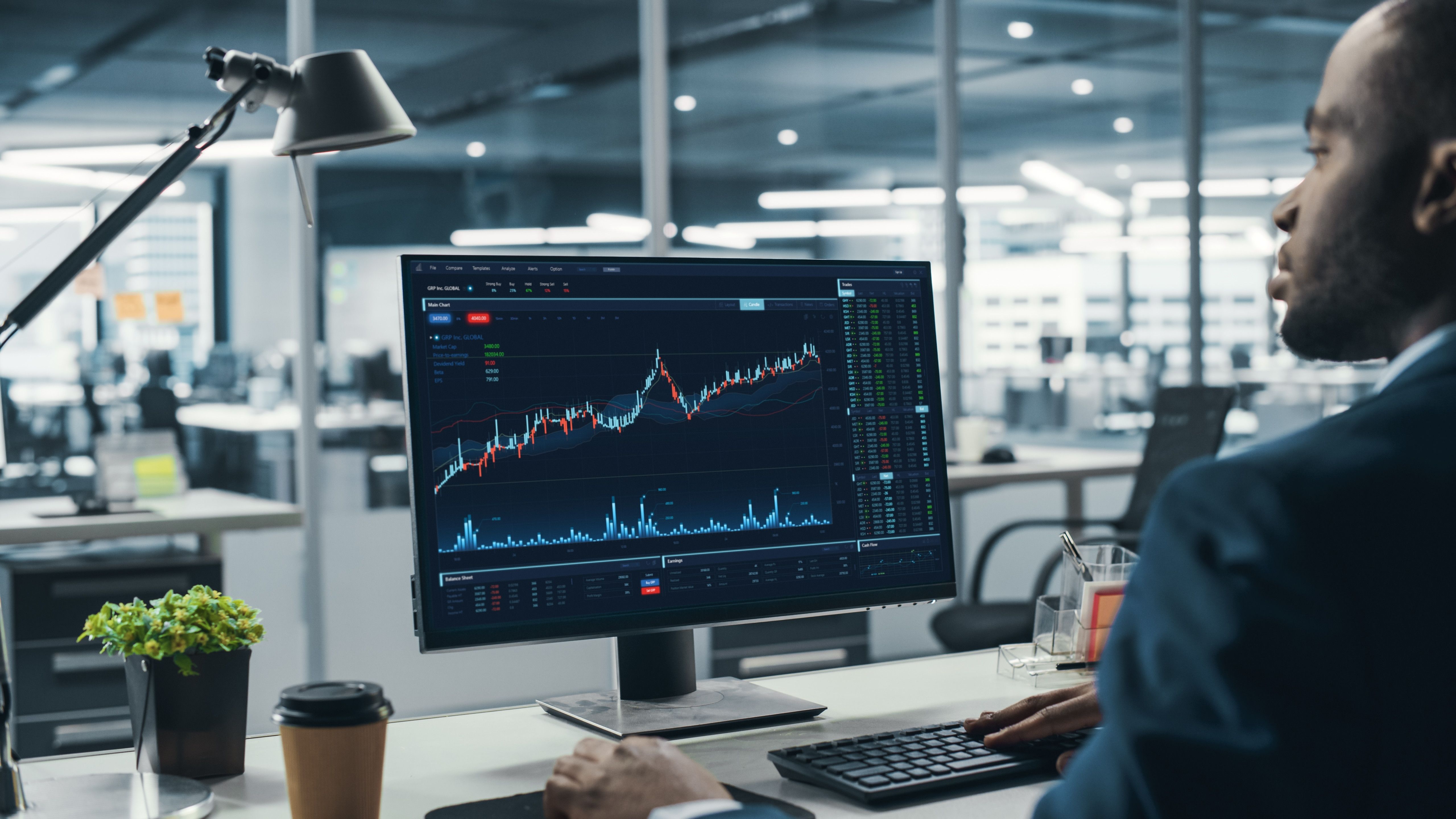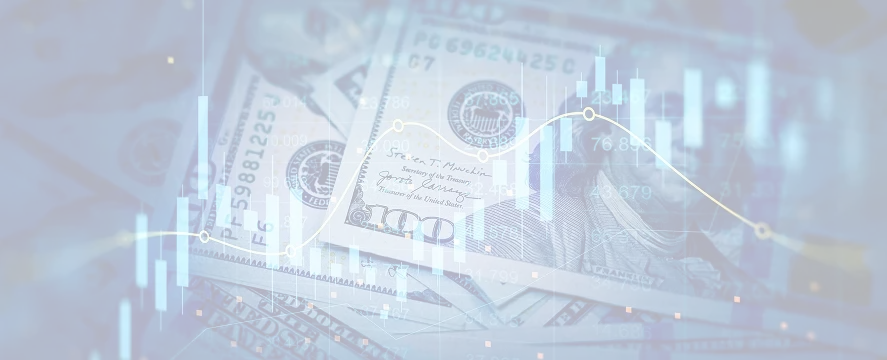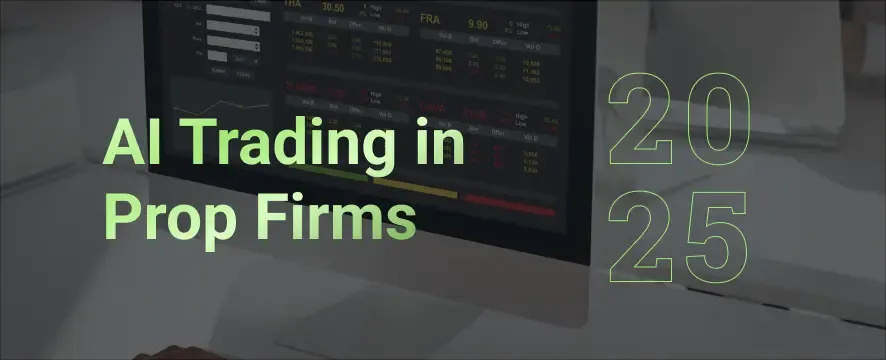
18 min read
Funded Trading Accounts Explained: Types, Benefits & How to Get One
A funded trading account gives you access to a firm’s capital to trade, share profits, and reduce personal risk.
12 min read
Share
How is technology revolutionizing forex trading, and how can you incorporate technology into your forex trading routine?

Technology has transformed every part of our lives, not least the ways we make money. The forex market is now a sophisticated ecosystem where traders leverage cutting-edge tools for competitive advantages.
Gone are the days when forex trading demanded endless hours of manual chart analysis or emotion-driven decisions. These tasks have been largely replaced by sophisticated tools that can handle everything from analysis to execution – making the entire process more efficient and potentially more profitable.
This article explores practical ways to incorporate technology into your forex trading routine, potentially helping you improve your results, minimize human errors, and adapt to ever-changing market conditions.
Technology continues to bring about a revolution in the forex trading landscape, offering numerous benefits that improve trading performance. One of the primary advantages is improved trade execution.
Advanced trading platforms and automated trading systems enable traders to execute trades with remarkable speed and precision. These systems can operate based on predefined criteria, ensuring that trades are executed without the delays or errors that can occur with manual trading.
In addition to improved trade execution, technology provides forex traders with sophisticated risk management tools. Automated stop-loss orders, for example, can automatically close a position when it reaches a certain loss threshold, helping to protect trading capital. Meanwhile, position sizing calculators dynamically adjust trade volumes based on risk tolerance and market conditions, ensuring that traders do not overexpose themselves to potential losses.
By leveraging these technological advancements, forex traders can minimize risks and maximize gains. The ability to execute trades quickly and efficiently, combined with robust risk management protocols, allows traders to make more informed trading decisions and improve their overall trading performance.
Algorithmic trading takes automation a step further by employing complex mathematical models for trading decisions. These algorithms analyze massive amounts of market data at speeds impossible for humans – identifying opportunities within milliseconds.
Financial institutions and hedge funds have utilized algorithmic trading for decades, yet these tools have become increasingly accessible to individual forex traders.
Modern algorithms provide numerous advantages in today's complex markets. They excel at spotting market inefficiencies others might miss, identifying split-second opportunities across different currency pairs or trading venues. These systems execute intricate trading strategies flawlessly, following a complex decision-making process - without human emotion.
Many algorithms cut transaction costs through optimal execution timing, breaking larger orders into smaller ones to minimize market impact. Moreover, they can test strategies against years of historical data, allowing traders to refine their approach before risking actual capital.
High-frequency trading sits at the cutting edge of financial market technology. This approach utilizes powerful computers to process large numbers of orders at extraordinary speeds – often holding positions for mere seconds or less.
While true high-frequency trading remains primarily an institutional game due to infrastructure requirements, individual traders can incorporate certain aspects into their own approaches:
Establishing low-latency connections to market data feeds for faster access to information
Implementing streamlined execution systems for rapid trades to minimize slippage
Developing simplified statistical arbitrage strategies across different currency pairs
Utilizing technical systems focusing on micro price movements
The key benefits include profiting from tiny price discrepancies across markets and reduced exposure to longer-term market risks that might otherwise affect positions. Even implementing partial high-frequency approaches can improve execution quality and provide opportunities unavailable to purely manual traders.
Technical analysis forms the backbone of countless trading strategies – and technology has dramatically enhanced these analytical capabilities. Today's technical analysis tools go well beyond basic chart patterns, offering sophisticated indicators that provide genuinely valuable insights into market trends.
Here are several ways technical analysis tools are reshaping the forex market:
Pattern recognition algorithms automatically identify chart formations like head and shoulders, double tops, or flag patterns, alerting traders to potential reversals or continuations before they might be manually spotted.
Machine learning models work behind the scenes, detecting correlations between various technical indicators, finding relationships that might escape traditional analysis.
Volume analysis tools have evolved to connect price movements with trading volume, providing insight into the strength behind market moves rather than just their direction.
Sentiment analysis systems now process news and social media content, gauging overall market mood and potential reaction to events.
These tools help traders identify potential entry and exit points while validating trading decisions with multiple confirmation signals. Combining several technical indicators creates a more comprehensive market view than relying on any single indicator could provide.
In forex trading, quality information provides a crucial edge. Market data analytics platforms consolidate information from numerous sources – delivering a comprehensive view of current market conditions.
These sophisticated platforms analyze an expansive range of information sources simultaneously, creating a comprehensive market picture impossible to achieve manually.
They process real-time market data from global exchanges, tracking price movements, order flow, and liquidity metrics across multiple venues. Economic indicators from economies worldwide are automatically incorporated into analysis, with many platforms offering instant alerts when releases differ from consensus expectations.
News feeds are continuously monitored for their direct impact on currency values, with natural language processing algorithms gauging the significance of each development. Market sentiment tracking extends across diverse trading groups, from retail participants to institutional players, providing insight into how different market segments are positioning themselves.
Some advanced analytics platforms even incorporate alternative data sources such as the following:
Social media sentiment analysis
Consumer spending patterns
Web traffic to financial sites
Supply chain disruptions
These non-traditional datasets often provide leading indicators before conventional metrics reflect changing economic conditions.
By transforming raw data into actionable intelligence, these tools help traders make substantially more informed decisions based on a holistic understanding of complex market dynamics.
Perhaps the most valuable technological contribution to forex trading comes through risk management tools. These systems help traders control exposure and preserve capital via automated protections.
Today's risk management technologies include a sophisticated array of protective tools that safeguard trading capital across different market conditions:
Automated stop-loss and take-profit mechanisms execute trades precisely at predetermined levels
Position sizing calculators dynamically adjust trade volumes based on risk parameters
Drawdown alerts and circuit breakers can temporarily halt trading during extreme events
Correlation analysis tools prevent overexposure to similar currency movements
Volatility-based position size adjustments automatically reduce exposure during turbulent periods
No matter how promising a trading strategy appears, it'll eventually fail without robust risk management protocols. Technology enforces the discipline that humans often abandon during emotionally charged market phases.
Machine learning represents the frontier of forex trading technology. These systems analyze vast datasets of past trends and market behavior to identify patterns that might predict future price movements.
Key applications of machine learning in forex trading span several areas, each addressing different aspects of the trading process.
Predictive models analyze historical price patterns alongside hundreds of variables to forecast price direction probabilities, assigning confidence levels to different scenarios rather than making binary predictions.
If you’ve already got a solid trading strategy in place, optimizing your trading parameters is like giving it a tune-up. With the help of computing power, you can test thousands of different setups to figure out which ones work best in specific market conditions.
Anomaly detection systems continuously monitor markets for unusual behavior, alerting traders to potential opportunities or risks when prices deviate from expected patterns.
While machine learning won't provide perfect market predictions, it excels at identifying high-probability scenarios, helping traders adjust their strategies accordingly. This technology continues to evolve rapidly, with newer models becoming increasingly sophisticated in analyzing complex market dynamics.
The most successful implementations typically combine machine learning insights with human oversight - using artificial intelligence to enhance rather than replace trader judgment.
Continuous improvement demands systematic tracking and analysis of all trading activities. Digital trading journals have largely replaced handwritten notes.
Modern trading journal software provides comprehensive analysis capabilities that transform trading data and results into actionable insights.
These platforms offer fully automated trade recording that captures every aspect of execution, including slippage, spread costs, and precise timing – elements often overlooked in manual tracking.
Advanced systems include pattern identification algorithms that analyze both successful and unsuccessful trades, highlighting common elements that might indicate promising setups or problematic habits.
Key features of modern trading journals include:
Psychological analysis of your decision-making processes
Interactive visualization tools highlighting strengths and weaknesses
Comparison of performance against benchmark indices
Correlation analysis between trading results and market conditions
Custom tagging systems for categorizing different strategy applications
Regularly reviewing this data helps traders identify patterns in their behavior, eliminate recurring mistakes, and reinforce successful approaches. This ultimately leads to better trading decisions.
Technology has transformed how traders learn and develop their skills. Online resources now provide access to knowledge once available only to professionals at major financial institutions.
Interactive courses covering various trading strategies now include video demonstrations, quizzes, and practical exercises that reinforce concepts through active learning rather than passive consumption.
Regular webinars featuring insights from market experts provide windows into professional trading approaches, often including live market analysis and real-time decision-making processes.
When questions arise, community forums are accessible to facilitate exchanging ideas with peers at all experience levels, creating collaborative learning environments impossible in traditional settings.
Successful traders commit to ongoing learning, constantly refining their understanding of market dynamics and incorporating new techniques into their trading routines. Technology makes this learning process more accessible and efficient than ever before.
The true power of technology in forex trading emerges when integrating multiple tools into a cohesive system. Rather than relying on any single technology, successful traders build ecosystems where different tools complement each other perfectly.
An integrated approach creates a seamless workflow where multiple technologies complement each other throughout the trading process.
For example, at the research stage, automated scanning tools continuously evaluate markets for opportunities matching specific criteria, identifying potential trades that warrant deeper analysis.
Then, when promising setups develop, alert systems may notify traders through multiple channels, ensuring awareness of opportunities regardless of location or current activities.
Before execution, risk management calculators determine appropriate position sizes based on account parameters, market volatility, and individual risk tolerance settings.
Once decisions are made, execution systems place trades according to predetermined rules, ensuring consistent implementation regardless of emotional state.
After positions are established, performance tracking software monitors results in real-time, providing objective feedback and suggesting specific improvements based on historical patterns.
This integration creates a trading routine that balances automation with human oversight, using technology for repetitive tasks while preserving human judgment for strategic decisions.
Incorporating technology into your forex trading routine requires a strategic approach. The process should be gradual, allowing sufficient time to evaluate each tool's effectiveness before moving forward.
A measured implementation strategy typically includes:
Identifying specific weaknesses in your current trading process
Researching tools specifically addressing those weaknesses
Thoroughly testing new technologies in demo environments
Gradually incorporating proven tools into live trading
Continuously evaluating the performance impact of each addition
This methodical approach prevents overwhelming changes while ensuring each technological addition delivers tangible benefits to your trading performance.
While technology offers powerful advantages, successful forex trading still requires human judgment. The most effective approach uses technology to enhance decision-making, rather than replacing it entirely.
Technology and human judgment each bring distinct strengths to the trading process.
Technology excels at processing enormous datasets quickly, analyzing thousands of price points, indicators, and correlations simultaneously to identify patterns invisible to human observation.
When executing predefined strategies, automated systems apply rules with perfect precision, never deviating from established parameters due to fatigue or distraction.
Perhaps most valuable in volatile markets, technology eliminates emotional biases from decisions, preventing fear or greed from influencing trade management.
During market extremes, when emotions run highest, automated systems maintain consistent discipline, following risk parameters even when psychological pressure tempts humans to abandon their rules.
Complementing these technological strengths, human traders bring crucial capabilities:
Adapting to unprecedented market conditions
Recognizing when historical patterns may no longer apply
Identifying regime changes when established correlations break down
Making nuanced judgments based on multiple qualitative factors
Developing creative new trading approaches
The ideal trading routine leverages strengths from both technology and human insight, creating synergies neither could achieve independently. This balanced approach represents the future of forex trading – not total automation, but human decision-making enhanced through technology.
Technology has fundamentally transformed forex trading - and still continues to.
Sophisticated analysis and execution techniques are now accessible to individual traders. Thoughtfully incorporating these tools into your trading routine can enhance performance, reduce costly errors, and help you compete more effectively in the global marketplace.
Success doesn't come from adopting every available technology but from selectively implementing tools addressing specific needs in your process. Start with foundational elements like proper risk management systems, then gradually add more advanced technologies as you develop.
Remember that technology serves as a tool supporting your trading strategy, not replacing it. The most successful traders maintain a careful balance between technological assistance and human judgment, using each where it provides maximum advantage.

18 min read
A funded trading account gives you access to a firm’s capital to trade, share profits, and reduce personal risk.

12 min read
Yes, some prop firms allow news trading. This 2025 guide shows which firms permit it, their rules, and how traders can benefit.

10 min read
A funded trader uses a prop firm’s capital instead of their own. Learn how funded accounts work, profit splits, and how to qualify.

13 min read
To become a funded trader in 2025, you must pass prop firm challenges by mastering strategy, risk control, and trading rules.

9 min read
Discover effective AI trading strategies for prop firms to enhance your profits. Learn practical tips to navigate the market successfully. Read more!
Get an insight from other users about SeacrestFunded and their experiences. 131K+ members and counting

Get instant access to weekly newsletter.